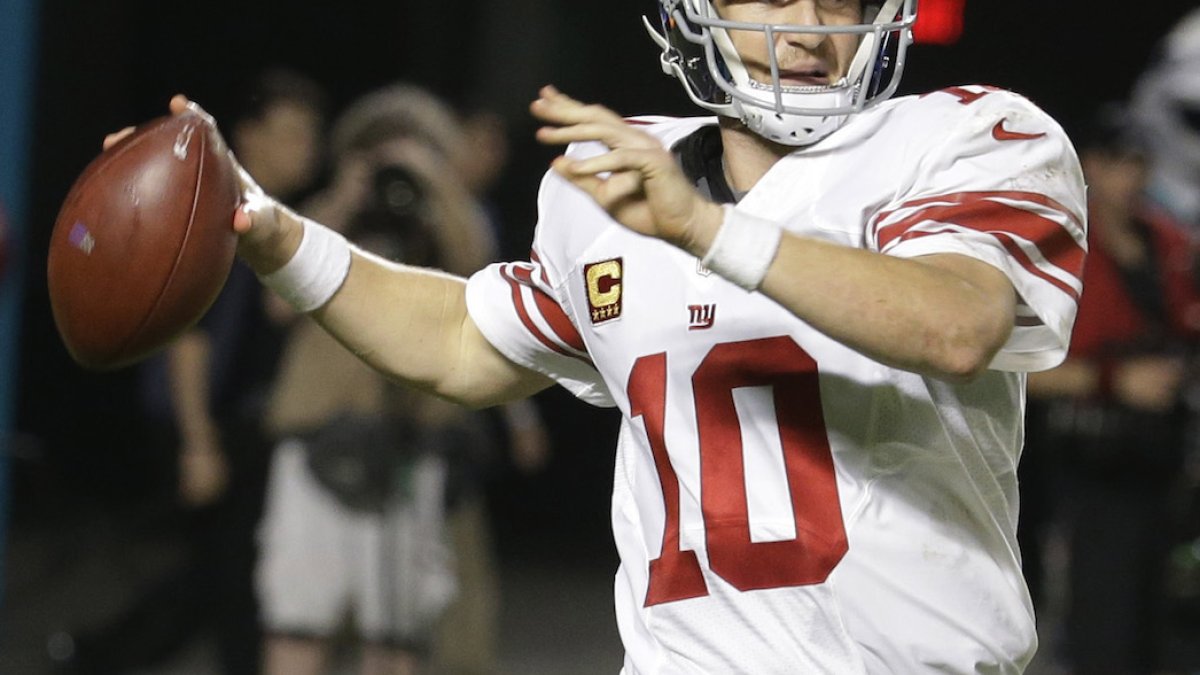In 2011, Eli Manning posted the highest-graded stretch of postseason quarterback play of the PFF era. He capped off the season with the best single-game performance of his career (since PFF began grading games in 2007) in Super Bowl XLVI.
This past season, Manning (now 35 years old) posted one of the best statistical seasons of his career; he set a career-high in touchdowns (35) and threw for the second-most yards in his 12 professional seasons. However, he finished the 2015 season with PFF's 26th-highest grade among QBs (67.4 overall grade on a 1–100 scale).

Although Manning recorded just 14 interceptions, he accounted for 30 turnover-worthy plays in 2015. That was 4.29 percent of the plays he was on the field for, putting him among the worst QBs in the league in this regard.
Turnover-worthy plays are constituted as plays that—regardless of outcome—put the ball in harm's way. For example, defensive backs dropping interceptions or fumbles recovered by the offense both still count against the QB.
All quarterbacks are negatively affected when pressured. However, for a QB with such gaudy stats in 2015, Manning was the 23rd-most accurate QB in the NFL when pressured. His mark was nearly 12 percent less accurate than the leader, Sam Bradford. Also, it’s not as if Manning was under a ton of pressure, ranking 26th among QBs in pressure percentage.
During the 2011 season—when facing the fifth-most pressure in the league—Manning was second-in accuracy percentage (61.9 percent)—0.1 percent behind Drew Brees.
Manning continued to post upward-trending grades until ultimately reaching his best year in the PFF era during the 2011 season. Since 2011, his grades have plummeted to—or even slightly below—the baseline, with 2015 being his lowest-graded season yet. Even the abysmal 2013 New York Giants’ season earned Manning a slightly better grade than his 2015 campaign.
The past two seasons have resulted in Manning’s highest overall accuracy percentages, largely due to the usage of short pass attempts in Ben McAdoo’s offense (throws that an NFL QB should routinely complete). Odell Beckham Jr. has also undoubtedly contributed to the rise in accuracy. However, since the new offense was instituted, Manning has been nothing short of average. It isn’t to say that Manning is necessarily hurting the offense, but he isn’t consistently part of the reason it experiences success.
Franchise quarterbacks are considered pure gold in today’s NFL. There’s no denying that Manning is exactly the type of player a franchise would want to represent them. Last year, he was awarded with a four-year contract running through 2019.
After an expensive offseason, the New York Giants are hoping to see the Eli Manning that led them to a Super Bowl victory in 2011 take the field rather than the 2015-version of the QB.



 © 2025 PFF - all rights reserved.
© 2025 PFF - all rights reserved.